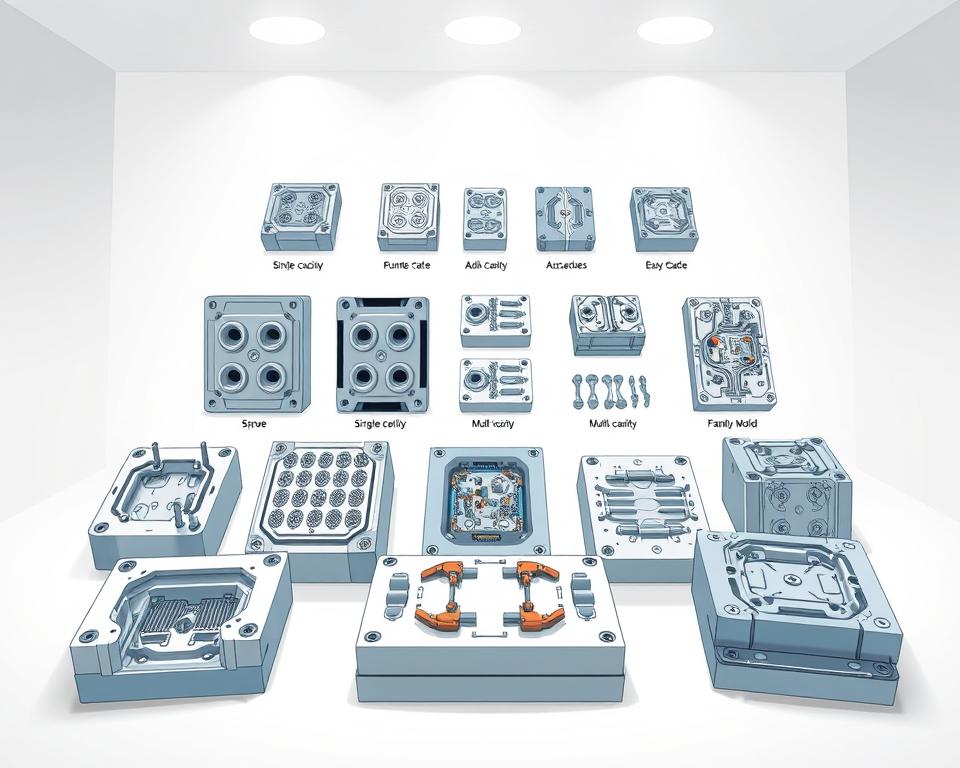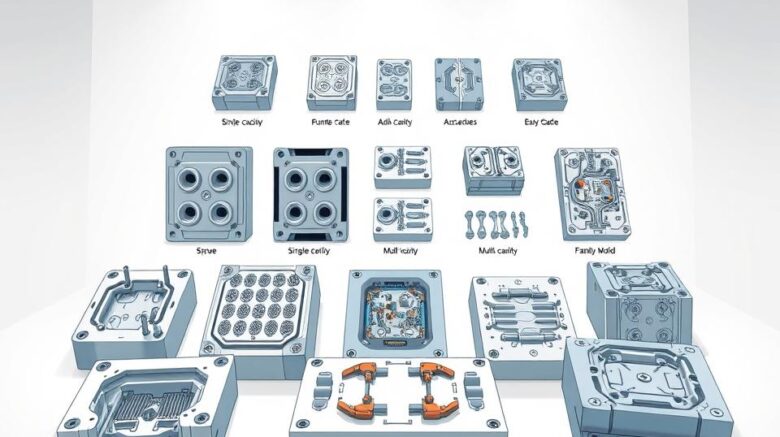The Ultimate Guide to China Injection Molding Sourcing
The important meeting has recently finished, your new product is a go, time is pressing, and funding is, to put it mildly, limited. And suddenly someone—perhaps your superior or the finance head—says the fateful words that make any project manager’s heart skip a beat: “We should look at sourcing this from China.”
You nod, of course. It makes sense on paper. The cost savings can be huge. Yet your thoughts are already spinning. You know the rumors, don’t you? The quality disasters, the communication black holes, the shipment that shows up three months late looking nothing like the sample. It can feel like you’re being asked to walk a tightrope between landing a huge cost win for the company and steering your project straight into a ditch.
Here’s the thing, though. Sourcing China injection molding doesn’t have to be a gamble. It’s a project, just like any other. And like any project, it succeeds or fails based on the process you follow. It’s less about finding the absolute cheapest quote and more about finding the right partner and managing the process with your eyes wide open. Disregard those scary tales. Let’s go through a step-by-step guide to succeed.

Initial Step: Prepare Your Information
Before you even whisper the word “supplier” or open a browser tab to Alibaba, you need to get your own house in order. Honestly, more than half of all overseas manufacturing problems start right here, with a weak or incomplete information package. Don’t assume a remote factory can guess your needs. A vague RFQ is like telling a contractor to bid on “a house.” You’ll get wildly varied quotes that are useless.
Your RFQ should be bulletproof—clear, detailed, and unambiguous. This becomes the bedrock of your sourcing project.
What should you include?
Start with your 3D design files. They’re essential. Use standard formats such as STEP or IGS to ensure compatibility. This serves as the definitive part geometry reference.
However, 3D alone won’t cut it. Include precise 2D engineering drawings. This is where you call out the stuff that a 3D model can’t communicate. Examples include tolerances (e.g., ‘25.00±0.05 mm’), material grade, surface finish requirements, and functional callouts. Call out smooth surfaces or precision hole sizes in big, bold notation.
After that, material choice. Avoid generic terms like “Plastic.” Don’t even just say “ABS.” Be explicit. If you need SABIC Cycolac MG38 in black, say exactly that. What’s the reason? Because there are thousands of plastic variations. Defining the exact material guarantees the performance and appearance you designed with plastic mold injection.
A good supplier can suggest alternatives, but you need to give them a clear starting point.
Finally, include the business details. What’s your forecasted annual volume (EAU)? They need clarity: is it 1,000 total shots or a million units per annum? Tool style, cavity count, and unit cost are volume-driven.
The Great Supplier Hunt
With your RFQ perfected, now, who do you send it to? Online sourcing is global but crowded. It’s easy to find a supplier; it’s hard to find a good one.
Your search will likely start on platforms like Alibaba or Made-in-China.com. These are great for casting a wide net and getting a feel for the landscape. Use them to build a shortlist, not the final list. Aim for a preliminary list of 10–15 potential partners.
But don’t stop there. Perhaps hire a local sourcing specialist. They do cost extra. Yet top agents deliver reliable, audited suppliers. They handle local liaison and oversight. As a newcomer, this offers priceless security. Think of it as insurance for your project timeline.
Also consider trade fairs. If you have the travel budget, attending a major industry event like Chinaplas can be a game-changer. Meeting onsite is unbeatable. Hold samples, talk shop, and gauge professionalism firsthand. Plus, ask peers for referrals. Consult trusted colleagues. A recommendation from a trusted peer is often worth its weight in gold.
Shortlisting Serious Suppliers
Now you have your long list of potential suppliers and you’ve sent out your beautiful RFQ package. estimates roll in. You’ll see ridiculously low offers and steep quotes. Your job now is to vet these companies and narrow it down to two or three serious contenders.
How to proceed? It blends technical checks with intuition.
Step one: audit communication. Is their turnaround swift and concise? Is their English good enough for complex technical discussions? But the key: do they probe your RFQ? The best firms will question and suggest. For instance: “Draft angle here could improve mold release. Tolerance check via CMM adds cost—proceed?” That’s a huge positive sign. It shows they’re engaged and experienced. A “Sure, no issues” vendor often means trouble.
Afterward, verify their technical arsenal. Get their tooling inventory. Review examples of parts akin to your design. If you’re making a large, complex housing, you don’t want a shop that specializes in tiny gears.
Next up: the factory audit. This is not optional. You would never hire a critical employee without an interview, so why would you send tens of thousands of dollars for a tool to a company you’ve never truly vetted? Either visit in person or engage a local audit service. They dispatch an on-site auditor for a day. They will verify the company is real, check their quality certifications like ISO 9001, assess the condition of their machinery, and get a general feel for the operation. That small investment can save you thousands.
Transforming CAD into Real Parts
After picking your vendor, you agree on 50% deposit to start toolmaking and 50% balance after sample sign-off. Now the real fun begins.
The first thing you should get back after sending your payment is a DFM report. Design for Manufacturability (DFM) is essential. This is your supplier’s formal feedback on your part design. It will highlight potential issues like areas with thick walls that could sink, sharp corners that could cause stress, or surfaces without enough draft angle for clean ejection from the mold. A thorough DFM is a sign of a professional operation. It’s a collaboration. Together, you tweak the design for best manufacturability.
When you greenlight the DFM, they machine the mold. A few weeks later, you’ll get an email that will make your heart beat a little faster: “T1 samples have shipped.” These are the very first parts off the new tool. It’s your first real test.
Expect T1s to need tweaks. It’s par for the course. There will be tiny imperfections, a dimension that’s slightly out of spec, or a blemish on the surface. You’ll provide detailed feedback, they’ll make small adjustments (or “tweaks”) to the tool, and then they’ll send you T2 plastic mold samples. This process might take a couple of rounds. Plan for this loop in your schedule.
At last, you get the perfect shot. Dimensions, finish, and performance all check out. This is your golden sample. You formally approve it, and this sample is now the standard against which all future mass-produced parts will be judged.
Crossing the Finish Line
Getting that golden sample feels like the end, but it isn’t. Next up: mass manufacturing. How can you keep part #10,000 matching your golden sample?
Put a strong QC process in place. This often involves a pre-shipment inspection. Bring in an external QC firm. For a few hundred dollars, they will go to the factory, randomly pull a statistically significant number of parts from your finished production run, and inspect them against your 2D drawing and the golden sample. They’ll send you a detailed report with photos and measurements. Once you sign off, you greenlight shipping and the last payment. This simple step prevents you from receiving a container full of scrap metal.
Lastly, plan logistics. Clarify your Incoterms. Is your price FOB (Free On Board), meaning the supplier’s responsibility ends when the goods are loaded onto the ship in China? Or EXW, shifting all transport to you? Your Incoterm selection drives landed expenses.
Overseas sourcing is a marathon. It hinges on strong supplier relations. See them as collaborators, not vendors. Transparent dialogue, respect, and process discipline win. It’s a challenging project, no doubt. But with this roadmap, you can succeed, achieve savings, and maintain quality. You’re set to succeed.
